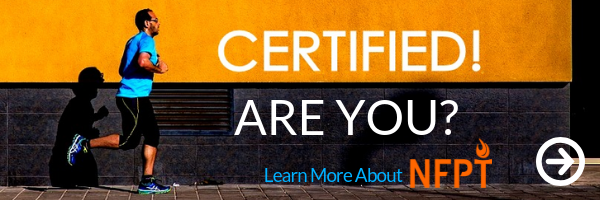
As seasoned personal trainers, we have witnessed the coming and going of a seemingly endless parade of fitness formats. From high-impact aerobics of the early 1980’s, through the Zumba craze, the Step mania, and currently the TurboKick phenomenon, there never seems to be a lack of variety or intensity options available to gym goers and training clients. One week it is body weight exercises; the next week it is low volume/heavy weights leading the pack. Do you ever get the feeling that there really is nothing new under the sun for us to share with our clients and members?
That notion is about to come to a screeching halt with the introduction of bodyART. An atypical emergence in the European market instead of here on domestic soil, this phenomenon is swiftly becoming noticed and integrated into the fabric of personal training. Created by Swiss dancer/gymnast Robert Steinbacher, this new fitness program is based upon the principles of yin and yang, adding in elements of yoga, physiotherapy, Pilates, dance, and Tai Chi.
bodyART was originally conceived as a therapeutic tool for children with special needs. In the year 1993, Steinbacher worked with children having physical disabilities in a Center for Curative Education near Salzburg. The major task set before him was movement education and fostering motor functions of the human body. One particular form of therapy played a defining role: ”DO IN”. This is the far -Eastern approach of physiotherapy and a kind of pedagogy where a human is treated as a blend between muscle chains/organs on the one side, and mind/soul on the other. When all of these elements finally came together for Steinbacher, and he was able to successfully integrate all the exercises with non-limited individuals, the result was, in his words, “like an explosion”.
One of the first things a bodyART participant will observe is that the exercises are hard, but this is how they will bring about change. The aspects that stand out are as follows:
- Responsibility for your own body;
- Consistency in the performance;
- Concentration on the body’s core
New York’s Crunch Gym was one of the first facilities in the United States to embrace bodyART, modifying it to appeal to the American modes of exercise. Marc Santa Maria, Crunch’s Group Fitness Regional Director, convinced Steinbacher to layer more intense cardio and strength-training exercises, normally offered in a separate class, onto his signature bodyART class, so it would appeal to the gym’s clientele. Whether participants are performing lunges, squats, or mountain climbers, their bodies are moving in a fluid manner that has a therapeutic feel. The bodyART method has also been introduced to the Middle East, when Gold’s Gym began offering such classes in the United Arab Emirates.
Mr. Steinbacher operates on the premise that the human structure is a functional, integrative unit of body, mind and soul. A typical bodyART™ class follows five different energy forms, resulting in a class that is a total-body workout. By incorporating exercises drawn from therapy, strength and flexibility training, combined with classical breathing techniques, the body adapts to become strengthened and stretched at the same time. Stress points get released, back pain lessens, and posture/body awareness improves. Concurrently, the unique “deep work” provides a moderate cardiovascular training during a typical class.
In 2005 and 2006, bodyART™ training was awarded the Best International Concept by ECA Obow awards. Becoming a Certified International Instructor, therefore, requires quite a bit of training and education. Depending on the needs of a trainer’s clientele, various options exist. Advanced levels of certification encompass such areas as Dynamics, Flow, Stretch, Energy, Myofascial Triggers, and PRT (Prevention, Rehab and Therapy).
bodyART may be perceived by some professionals as “holistic training”, and that is indeed an accurate term. Strictly speaking, holistic training focuses on incorporating the entire muscle cell, and not just parts of it. The muscle cell is a highly intricate entity. If an athlete focuses solely on achieving hypertrophy, other parts of the cell will not perceive any changes after training. Therefore, in order to maximize a muscle cell’s size, it needs exposure to a variety of stressors, and not simply the “3 sets of 12 reps” scheme. High reps, low reps, fast and slow, as well as explosive moves must be incorporated in order to activate all parts of the cell. In this regard, a bodyART class can become a bodybuilder’s strongest ally in the quest to gain strength, power and size.
In order to customize a bodyART type of program for clients, it is important to take the time for an initial consultation. During this meeting, make a complete evaluation of a client’s medial history, strengths, lifestyle, nutritional habits, stress levels and overall cardiovascular health. Listen to the goals he or she describes, and attempt to seek out any potential weaknesses/deficiencies, limitations or previous incidences of injury. Armed with this knowledge, the next step in a holistic program is to explain the importance of not merely cardio time but building muscle mass, which, as we know, translates into healthier metabolism and a leaner physique. Along with tangible/visible benefits such as improved posture and coordination, muscle strength also facilitates the building of an individual’s self- confidence, thereby having a positive bearing on his or her emotional well-being. A carefully planned bodyArt workout can encompass and accomplish all of these fitness aspects in a way we have quite possibly never considered.
From its inception, the fundamental essence of bodyART has been the idea that humans don’t need anything to get in touch with themselves except themselves. It may come as a surprise to many of us that the majority of individuals really do not require music, the screaming “Drill Sergeant” mentality of Group Exercise instructors, or even a plethora of gym equipment. When it comes to awareness and functional development, clients would do well by learning to take over responsibility for their bodies again, to independently get to know themselves physically and spiritually, and to allow a trained professional to guide them through the process. Yes, bodyART truly can accomplish all of this and more.
If you have not yet encountered this exciting new frontier in our profession, you might think about slowly incorporating aspects of it into some of your clients’ workouts. There are many ways to expound upon the basics, and I encourage you to follow the research as it unfolds. You just may find yourself leading the way towards a new program at your own gym!
_______________________________________
ARTICLE REFERENCES:
- http://www.bodyart-training.com
- http://www.mvtimes.com/2014/02/03/workout-of-the-week-bodyart/
- http://www.muscleandfitness.com/workouts/workout-routines/holistic-training-explosive-growth
- http://www.bodyart-training.com/info/history/
- http://www.doyouyoga.com/bodyart-classes-combine-yoga-pilates-dance-and-cardio/







